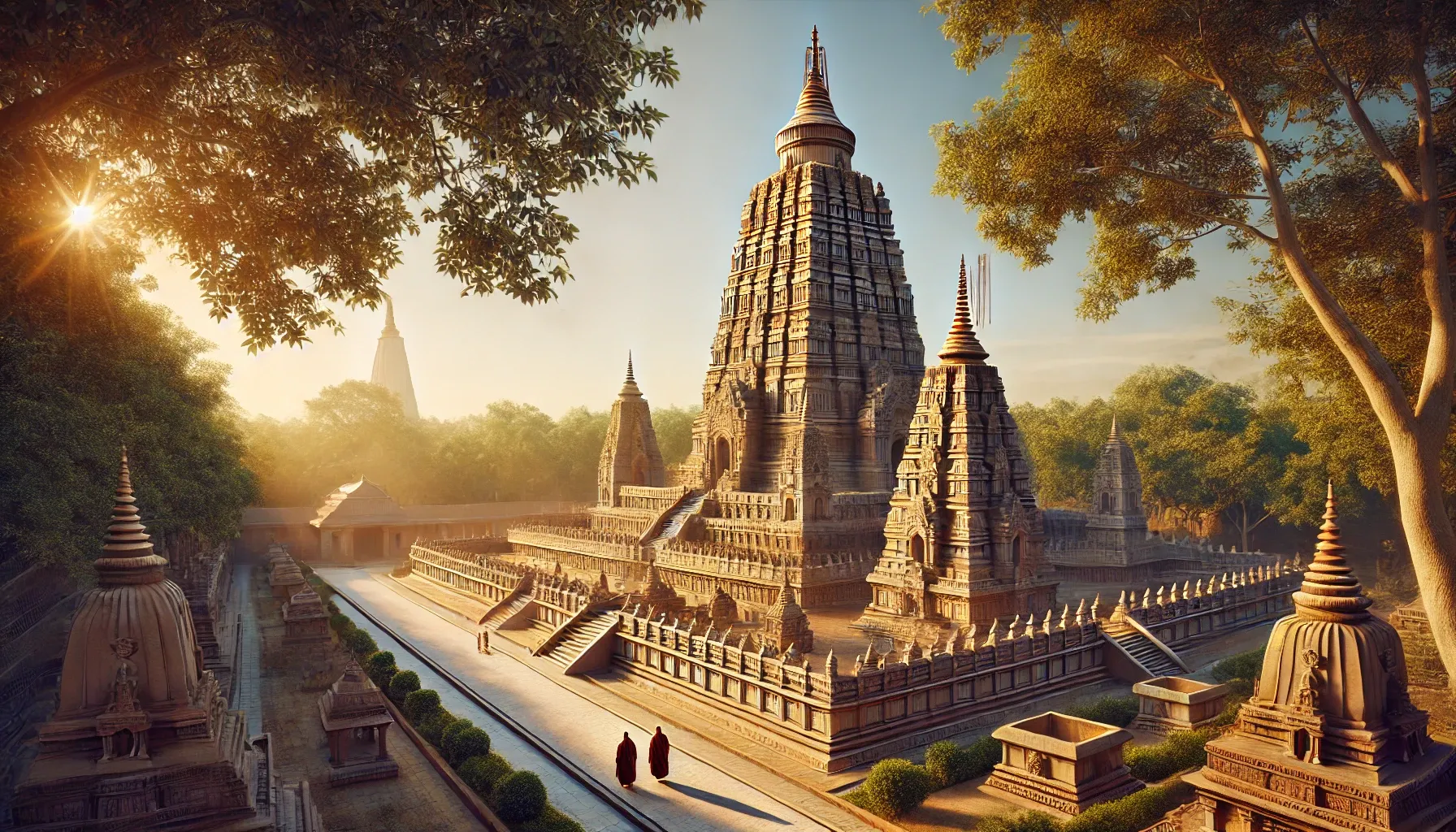UPSC
Indian Express Concise
The Mahabodhi Temple Dispute: A Historical Overview
Last Updated
2nd April, 2025
Date Published
2nd April, 2025
Share This Post With Someone

Context:
The Mahabodhi Temple in Bodh Gaya, Bihar, a UNESCO World Heritage Site, has been a focal point of contention between Buddhists and Hindus for decades. This summary outlines the historical, legal, and cultural dimensions of the dispute over its control, as detailed in a recent article from The Indian Express, providing essential insights for understanding this ongoing issue.
Key Points:
- Recent Protests: Over the past two months (as of April 1, 2025), large-scale demonstrations across India have demanded that Buddhists gain full control of the Mahabodhi Temple, highlighting a decades-long dispute.
- Buddhist Demand: Buddhists seek the repeal of the Bodh Gaya Temple Act, 1949 (BGTA), which currently governs the temple, arguing for exclusive management rights.
- Historical Significance: The temple marks the site where Siddhartha Gautama attained enlightenment in 589 BCE under the Bodhi Tree, becoming the Buddha. It is one of Buddhism’s holiest sites.
- Early Development: Emperor Ashoka built a simple shrine in the 3rd century BCE, with only the Vajrasana (Diamond Throne) surviving. Additional structures emerged during the Shunga period (2nd-1st century BCE).
- Architectural Evolution: The current pyramidal structure dates to the Gupta period (6th century CE), with the Palas (8th-12th century CE) as the last major royal patrons.
- Decline of Buddhism: By the 11th-12th centuries, Buddhism declined in India, and the temple fell into disrepair, largely abandoned from the 13th to 19th centuries.
- Restoration Efforts: Alexander Cunningham of the Archaeological Survey of India began restoration in the 1880s, reviving the site’s prominence.
- Hindu Control: Around 1590, Shaivite monk Mahant Ghamandi Giri established the Bodh Gaya Math, a Hindu monastery, claiming the temple as a Hindu site. His descendants maintain this control.
- Hindu Perspective: Swami Vivekananda Giri, the current Hindu priest, views Buddha as the ninth reincarnation of Vishnu, framing Buddhists as “brothers” within Hindu tradition.
- Buddhist Revival: In the late 19th century, Sri Lankan monk Anagarika Dhammapala campaigned for Buddhist control, taking legal action against Hindu priests.
- Bodh Gaya Temple Act, 1949: Passed 16 years after Dhammapala’s death, the BGTA created a management committee with a Chairman (Gaya’s District Magistrate) and eight members—four Hindus and four Buddhists—nominated by the Bihar government.
- Chairman Clause: The Act mandates a Hindu Chairman if the District Magistrate is non-Hindu, ensuring Hindu influence in management.
- Buddhist Grievances: Buddhists argue that Hindu rituals dominate the temple, diluting its Buddhist identity, with figures like Dr. Siddharth Dhende expressing pain over non-Buddhist practices.
- Legal Complexity: The Places of Worship Act, 1991, complicates Buddhist claims by mandating that the religious character of a site as of August 15, 1947, be maintained, favoring the status quo of shared control.
- UNESCO Recognition: The temple was designated a World Heritage Site in 2002, underscoring its global cultural and religious significance.
Key Terms:
- Mahabodhi Temple: A Buddhist temple in Bodh Gaya marking the site of Buddha’s enlightenment.
- Bodh Gaya Temple Act, 1949 (BGTA): Legislation governing the temple’s management with a mixed Hindu-Buddhist committee.
- Bodhi Tree: The tree under which Buddha attained enlightenment, a sacred symbol in Buddhism.
- Vajrasana: The “Diamond Throne,” a stone slab from Ashoka’s time marking Buddha’s meditation spot.
- Anagarika Dhammapala: Sri Lankan monk who led efforts to reclaim the temple for Buddhists in the late 19th century.
- Places of Worship Act, 1991: Law preserving the religious character of sites as of India’s independence in 1947.
- UNESCO World Heritage Site: A designation recognizing the temple’s universal cultural value since 2002.
- Bodh Gaya Math: Hindu monastery established by Mahant Ghamandi Giri, asserting control over the temple since 1590.
Link To The Original Article – https://indianexpress.com/article/explained/explained-history/explained-the-decades-old-dispute-over-who-controls-mahabodhi-temple-in-gaya-9919163/